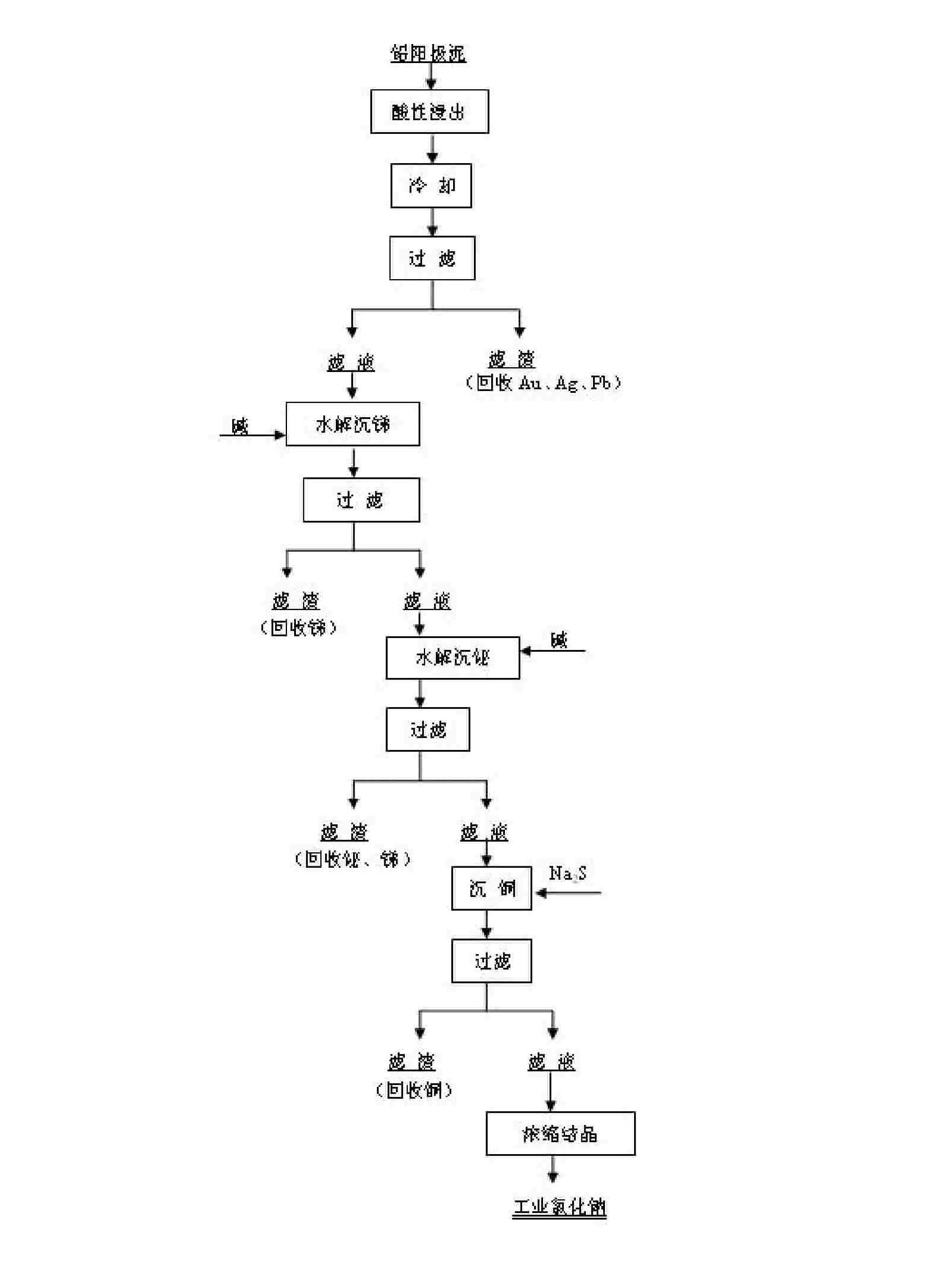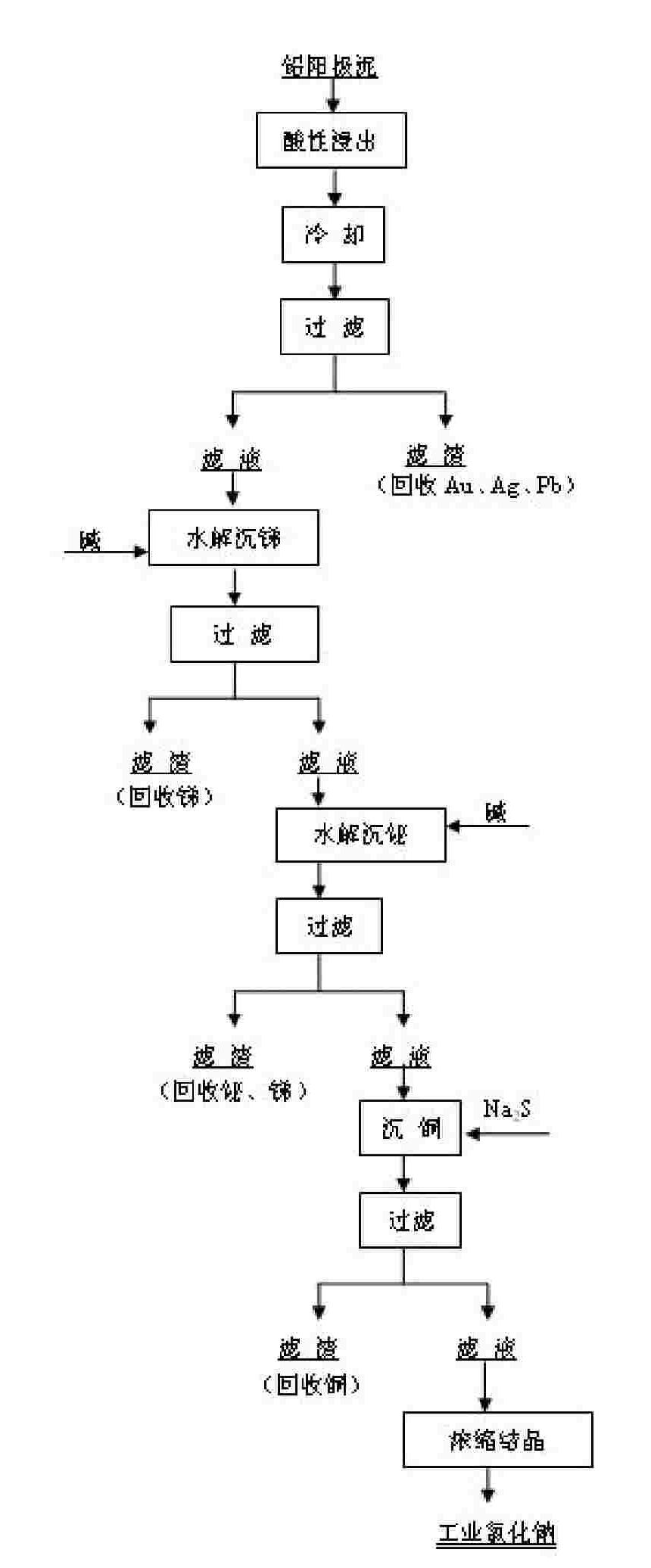Method for separating valuable metals from lead anode mud
A technology for lead anode slime and valuable metals, which is applied in the field of separating valuable metals from lead anode slime, can solve the problems of low direct recovery rate and impact on copper recovery rate, and achieve simple process, high recovery rate and low temperature Effect
- Summary
- Abstract
- Description
- Claims
- Application Information
AI Technical Summary
Problems solved by technology
Method used
Image
Examples
Embodiment 1
[0037] In the acid leaching step, the main components (w%) of lead anode slime are: Pb 15.39, Au 0.0025, Ag 2.90, Sb34.50, Bi3.45, Cu3.82, As 8.88, and the rest are acid radical ions and a small amount of other metals ion. Leach with hydrochloric acid with a concentration of 5N, the liquid-solid ratio between the volume of the leachate and the dry weight of the anode slime is 6:1; the leaching temperature is 70°C, the leaching time is 4h, and the oxidant MnO 2 The amount of addition is 5% of the dry weight of lead anode slime. After leaching, it is cooled to 50°C and filtered to obtain a filtrate containing Sb, Bi, Cu and a filter residue containing Au, Ag, and Pb. The filter residue is sent to recover lead and precious metals , filtrate, slag metering, after sampling and testing, calculated lead, gold, silver into precious lead rate are all above 99%, Bi, Sb leaching rate is more than 99%, Cu leaching rate is 96.81%.
[0038] The hydrolysis antimony precipitation step is to ...
Embodiment 2
[0041] Acidic leaching uses HCl with a concentration of 3mol / L+H with a concentration of 1mol / L 2 SO 4 , mixed as leaching solution, leaching temperature 65°C, leaching time 5h, oxidant MnO 2 The amount used is 10% of the dry weight of the anode slime, the leaching rate of Cu into the filtrate is 95%, and the antimony is hydrolyzed and the Na 2 CO 3 Until the free acid of the solution is 2.0N, keep it unchanged for 0.5h, filter, hydrolyze the precipitated bismuth and add Na 2 CO 3 To solution pH value is 4.5, all the other are with example 1.
Embodiment 3
[0043] Acidic leaching uses HCl with a concentration of 4mol / L as the leaching solution, the leaching temperature is 75°C, the leaching time is 3h, and the oxidant MnO 2 The dosage is 8% of the dry weight of the anode slime, the leaching rate of Cu into the filtrate is 95%, and the antimony is hydrolyzed and NaHCO is added 3 Until the free acid of the solution is 1.5N, keep it unchanged for 0.5h, filter, hydrolyze the precipitated bismuth and add NaHCO 3 To solution pH value is 4.0, all the other are with example 1.
PUM
 Login to View More
Login to View More Abstract
Description
Claims
Application Information
 Login to View More
Login to View More - R&D
- Intellectual Property
- Life Sciences
- Materials
- Tech Scout
- Unparalleled Data Quality
- Higher Quality Content
- 60% Fewer Hallucinations
Browse by: Latest US Patents, China's latest patents, Technical Efficacy Thesaurus, Application Domain, Technology Topic, Popular Technical Reports.
© 2025 PatSnap. All rights reserved.Legal|Privacy policy|Modern Slavery Act Transparency Statement|Sitemap|About US| Contact US: help@patsnap.com


